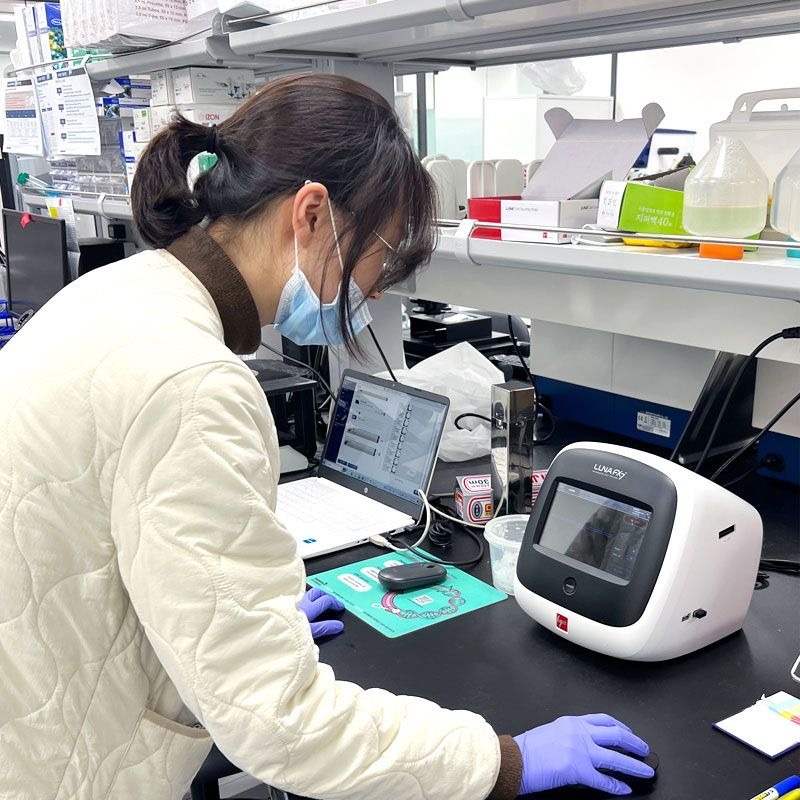Blog
How Does Premises Liability Work?

Do you know what premises liability is and how it applies to property owners?
You may be unfamiliar with the term, but you likely know what a slip and fall or swimming pool accidents are. Both of these are examples of a premises liability accident.
Any property owner has a responsibility to ensure that their property is safe and has no glaring risk for an accident. Should they fail to do so, then they’re violating their premises liability.
If you’re the victim of a premises liability accident, then you’ll want to seek reparations for the pain and injury you’ve been inflicted. Before you hire an attorney, it’s helpful to fully understand this law and if it will apply to your situation.
Fortunately, we’ll explain premises liability below to help you determine if you’re eligible for damages.
What Is Premises Liability?
First, you’ll need to know what premises liability is. This term refers to the requirement for property owners to ensure that their property is reasonably safe for any visitors.
With this in mind, a property owner needs to be diligent about eliminating any hazards that can lead to an injury. At the very least, a hazard must be identified so it can be easily avoided. Failing to do so can make a property owner responsible for any accident that ensues.
A perfect example to picture this is entering an establishment with a recently mopped floor. If there isn’t a wet floor sign present and you slip and fall, then the business was failing to uphold their premises liability.
What Situations Are Covered?
The scope of premises liability is fairly wide, meaning that an array of accidents can be attributed to it. Here are a few of the most common situations involved:
- Slip and Falls – This is one of the biggest reasons for premises liability cases. Typically, there is something on the ground that causes someone to slip and sustain an injury. This often includes substances like liquid and food. If the spill is not indicated or dealt with, then this creates a premises liability accident.
- Poor Maintenance – Closely related to slip and falls is poor maintenance. This happens when an establishment fails to perform upkeep on their property. As a result, there may be an uneven sidewalk, faulty railings, broken stairs, or something that may fall on someone. A property owner is responsible for ensuring everything is safe and up to par.
- Lack of Security – One you might not be familiar with is a lack of security. This pertains specifically to establishments that need to keep people safe from criminal activity. Two great examples include college campuses and shopping malls. If you’re the victim of an assault or robbery on either property and there is no security around to help, then premises liability will apply.
- Animal Attacks – Another situation involves animal attacks. Someone who owns a pet is responsible for preventing them from harming anyone. This is particularly relevant for dog owners and dog bites. A dog owner that knows their dog is potentially dangerous must take measures to ensure that they don’t harm anyone.
- Swimming Pools – A very specific case involves swimming pools. Property owners that have a swimming pool on the premises need to make the pool difficult for children to access. This means placing a gate around it and/or covering the pool.
What Does This Mean for a Property Owner?
Understanding what premises liability is and what it applies to makes it easier to extrapolate the responsibility of a property owner.
If you own a property, then you must reasonably handle all hazards promptly. The reasonability factor is very important because there are some situations that a property owner can’t possibly prevent.
For example, a property owner can’t repair a broken staircase if it just happened and they don’t yet know about it. Another one includes having round-the-clock security for an establishment that doesn’t experience much crime.
A property owner is only responsible for preventing foreseeable hazards. If something entirely unexpected happens, it’s unfair to place the responsibility on them.
Should you own a property, then you need to keep visitors safe from harm due to something wrong with your property.
You should also understand that property owners are only responsible for two types of visitors; invitees and licensees. Invitees are people that exist to engage in business, like a shopper, repairman, or salesperson. Licensees are those that visit the property for non-business persons like a social visit.
There’s a third category of visitors known as trespassers, but you have no obligation to keep them safe unless they are children and an attractive nuisance is involved. This involves situations like the swimming pool mentioned above, but it can also apply to things like having a trampoline or large machinery sitting around on your property.
How Can You Receive Compensation If You Are Injured?
The last piece of information to understand is what makes you eligible for compensation from a premises liability accident.
As we mentioned above, a property owner is only liable for reasonably foreseeable accidents. Adding on to this, you need to be able to prove that your injury was caused due to the owner’s negligence. This means that they identified a hazard and ignored it or failed to take adequate action to prevent harm to any visitors.
If negligence is provable, another consideration is about any responsibility placed on you as the victim. Behaviors like being distracted or intoxicated can shift some of the blame to you. Furthermore, failing to minimize the impact of an accident can also affect the outcome of your case.
This is important because how much responsibility is attributed to you can determine how much of a financial award you’re entitled to. A majority of states use laws that involved modified compared negligence.
This means that you can only receive compensation if you are less than 50% responsible for the accident. You’re also only entitled to the property owner’s contribution of the responsibility. If they are found 70% responsible, then you can only receive 70% of the claim.
A few states use laws that involve pure contributory or pure comparative fault rules. Pure contributory means that you cannot receive compensation if you are at all found to blame.
On the other hand, pure comparative means that you can file a case if the owner is found at all to blame. Both laws void the 50% rule, meaning that as little as 1% blame can bar or enable you to receive reparations.
Closing Thoughts
If you’re injured on someone else’s property, then you may be a victim of a premises liability accident.
Premises liability refers to a property owner’s reasonable obligation to prevent any hazards from causing injury. This applies to situations like slip and falls, poor maintenance, a lack of security, animal attacks, and swimming pools or other attractive nuisances.
Property owners are responsible for preventing foreseeable harm from affecting their visitors. This means that someone is only eligible for compensation if they can prove that an owner acted negligently and ignored the hazard.
If you’re able to prove negligence, then it will be determined how much you were to blame for the injury. In most states, you need to be less than 50% responsible to receive compensation for the accident. Your percentage of responsibility will affect the amount of money you can be awarded from the case.
Regardless of your circumstances, reach out to an attorney and discuss your situation with them to determine if your accident is a good candidate for a premises liability case!
Blog
Applications of Automation in Research and Clinical Diagnostics

Precision counts in the fields of science and medicine. This is particularly true for the basic task of counting and analyzing cells, which is used in both clinical and research settings. The introduction of automatic cell counters, which provide efficiency and accuracy that manual approaches cannot match, has resulted in a notable advancement in this field.
What is Automated Cell Counting?
Automated cell counters are advanced instruments that are made to precisely and swiftly count and examine cells. In contrast to manual counting methods that rely on human vision and a microscope, automated counters use software algorithms and image technology to count and analyze cells. This ensures more accurate findings by expediting the procedure and lowering the possibility of human error.
Type of Automated Cell Counters
There are several types of automated cell counters used in research and clinical diagnostics, each employing different technologies and methods for cell counting. The main types of automated cell counters include:
These various types of automated cell counters provide effective and precise methods for cell counting and analysis, each with unique benefits and uses in clinical and research environments.
Automated cell counters have become indispensable tools in understanding cell behavior. They are used in various research fields, including cancer research, drug discovery, and stem cell therapy.
One of the key benefits in research is the ability to handle large volumes of data. For instance, in drug discovery, automated counters can quickly analyze the effects of thousands of compounds on cell growth and death. This high-throughput capability accelerates the pace of research, allowing scientists to screen potential drugs more efficiently than ever before.
Moreover, automated cell counters offer the precision required to detect subtle changes in cell populations. This is crucial in fields like cancer research, where understanding the behavior of cancer cells can lead to the development of more effective treatments.
The impact of automated cell counters extends beyond the research laboratory and into clinical diagnostics. In medical laboratories, these devices play a critical role in routine blood tests, infectious disease diagnostics, and monitoring patient health during treatment.
For example, in a routine complete blood count (CBC), automated cell counters can quickly provide a detailed analysis of different blood cell types. This information is vital for diagnosing conditions such as anemia, infections, and blood cancers. The speed and accuracy of automated counters mean that patients can receive diagnoses and begin treatment more swiftly.
In the context of infectious diseases, automated counters can detect and quantify specific pathogens or immune cells, helping to diagnose infections quickly and accurately. During the COVID-19 pandemic, automated cell counting technologies were instrumental in monitoring virus spread and patients’ immune responses, showcasing their value in crisis situations.
Challenges and Future Directions
The initial cost of these devices can be high, and their operation requires specific technical expertise. Additionally, different types of cells and conditions may require customized counting protocols, necessitating ongoing adjustments and updates to software algorithms.
Looking ahead, ongoing advancements in technology promise to further enhance the capabilities of automated cell counters. The global cell counting market growth is anticipated at a CAGR of 7.5% by 2032. Innovations in imaging technology, artificial intelligence, and machine learning are expected to improve accuracy, speed, and the ability to analyze more complex cell characteristics. As these technologies evolve, automated cell counters will become even more integral to research and diagnostics, opening new avenues for scientific discovery and patient care.
-

 Tech3 years ago
Tech3 years agoEffuel Reviews (2021) – Effuel ECO OBD2 Saves Fuel, and Reduce Gas Cost? Effuel Customer Reviews
-

 Tech5 years ago
Tech5 years agoBosch Power Tools India Launches ‘Cordless Matlab Bosch’ Campaign to Demonstrate the Power of Cordless
-

 Lifestyle5 years ago
Lifestyle5 years agoCatholic Cases App brings Church’s Moral Teachings to Androids and iPhones
-

 Lifestyle3 years ago
Lifestyle3 years agoEast Side Hype x Billionaire Boys Club. Hottest New Streetwear Releases in Utah.
-

 Tech6 years ago
Tech6 years agoCloud Buyers & Investors to Profit in the Future
-

 Lifestyle4 years ago
Lifestyle4 years agoThe Midas of Cosmetic Dermatology: Dr. Simon Ourian
-

 Health5 years ago
Health5 years agoCBDistillery Review: Is it a scam?
-

 Entertainment5 years ago
Entertainment5 years agoAvengers Endgame now Available on 123Movies for Download & Streaming for Free
